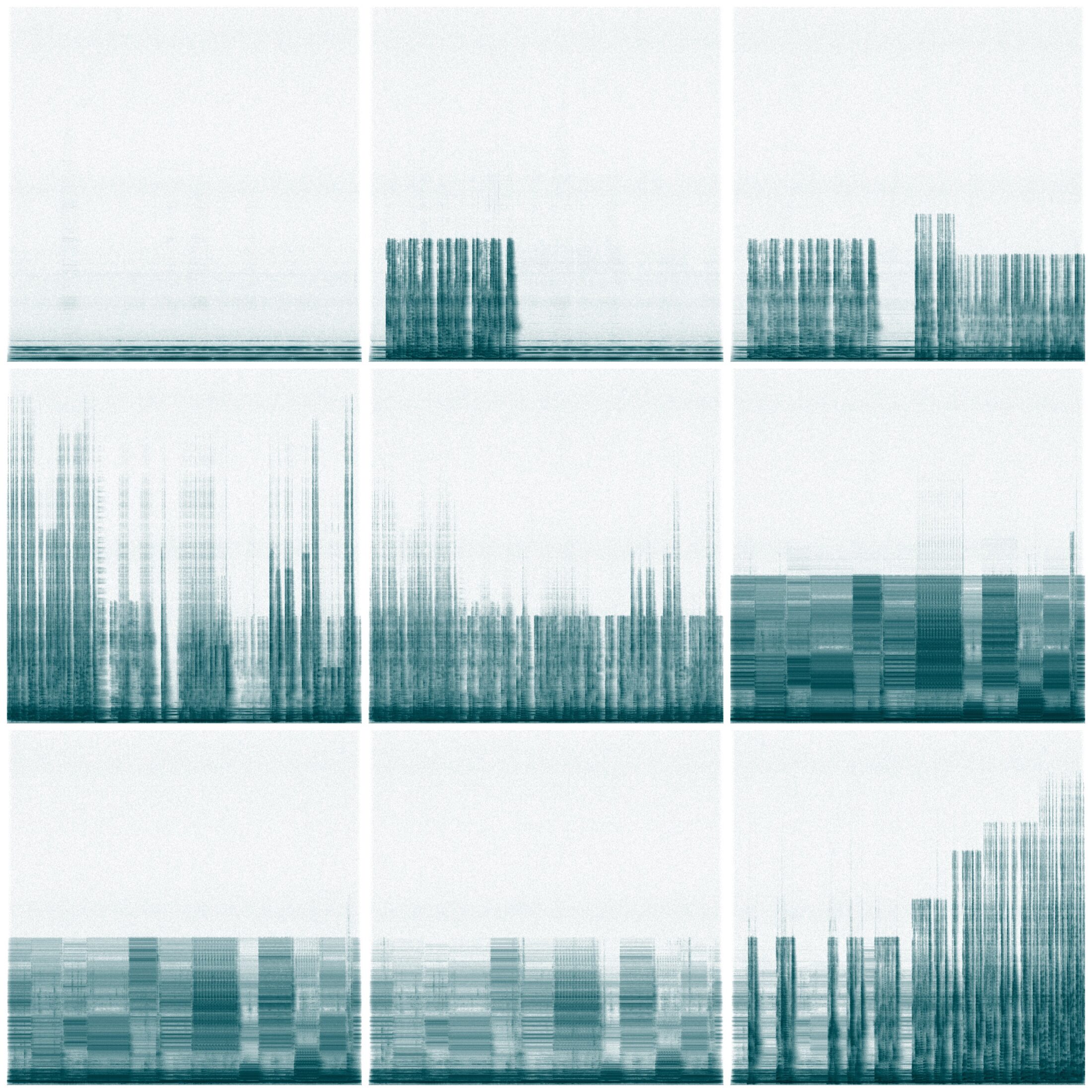Remote Voices was a week-long intervention by Gabriela Gordillo in Minute/Year. It occurred at bb15 from 1.–8. April, 2020, during the first couple of weeks of the initial coronavirus lockdown.
The Copenhagen Architecture Festival has also published this account of the intervention, as part of their “corona essays” series of contemporary writing about Covid-19 and the built environment.
Minute/Year, the ongoing durational installation that began in 2016, is currently installed in bb15, in Linz, Austria. Alongside the work, there has been an ongoing program of events — interventions, micro-concerts, open minutes, and more — organised and curated by Gabriela Gordillo. These events had originally been intended to allow a place to experiment, reflect, hack, and play with the piece, both conceptually and practically.
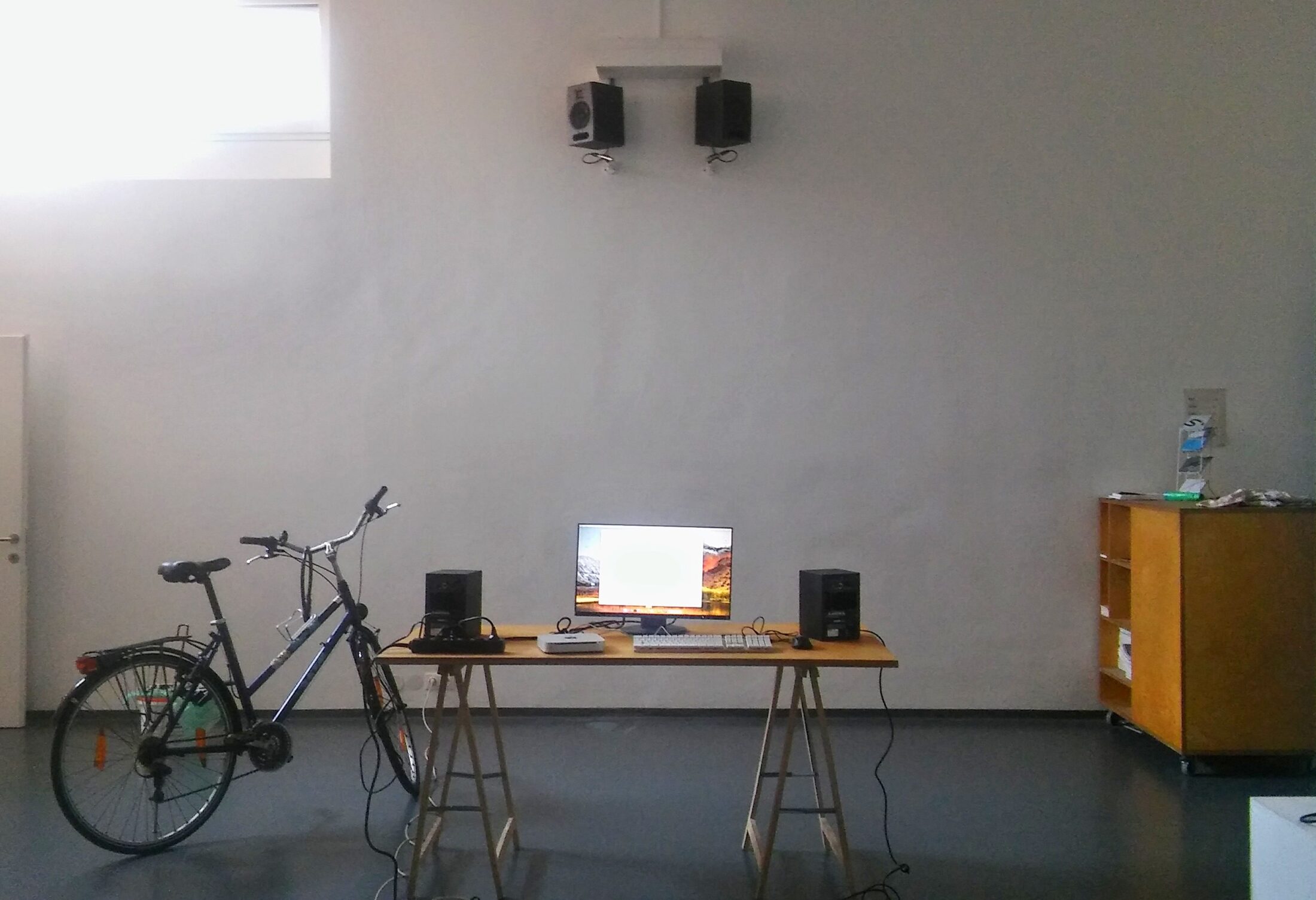
However, on 16. March 2020, Austria went into coronavirus lockdown. Since then, just like everywhere else, there have been no events happening at bb15. One result of this strange situation was that the daily recordings made by Minute/Year in the last two weeks of March steadily became hushed and lulled, creating a series of slowly-waning resonant-frequency drones, with correspondingly sparse spectrogram images.
But what if you could get everything set up to be able to make sound in the space, without actually being physically present in the space? This is what Gabriela organised, and has been doing — with a computer and speakers set up in the main exhibition space of bb15, playing remotely-triggered text-to-speech audio (via Pure Data and NaturalReader).
With this set-up, over the days of the first week of April 2020 (or, to be exact, slightly longer than a week), Gabriela has been undertaking Remote Voices — a lockdown-compliant remote intervention series in the daily recordings made by Minute/Year.
Each day since the beginning of April, this series has included a text-based intervention or activation. Each of these interventions has in turn created layers, both sonic and visual, in the daily slices recorded and archived by Minute/Year.
The series began on 1. April, with Yoko Ono’s 1962 poetic score, PAINTING TO BE CONSTRUCTED IN YOUR HEAD:
Go on transforming a square canvas
— Yoko Ono, PAINTING TO BE CONSTRUCTED IN YOUR HEAD (1962), first published in Grapefruit, 1964.
in your head until it becomes a
circle. Pick out any shape in the
process and pin up or place on the
canvas an object, a smell, a sound
or a colour that came to your mind
in association with the shape.
The resulting archival record is a stark slice into the drones.
The following day, 2. April, a fragment from Malevich’s Suprematist Manifesto (first published in 1924) was layered on top.
The so-called “materialization” of a feeling in the conscious mind really means a materialization of the reflection of that feeling through the medium of some realistic conception. Such a realistic conception is without value in suprematist art. And not only in suprematist art but in art generally, because the enduring, true value of a work of art (to whatever school it may belong) resides solely in the feeling expressed.
— Kazimir Malevich, Suprematist Manifesto (fragment), 1924
The result:
Days three and four were both based on Tristan Tzara’s 1920 score, To Make a Dadaist Poem:
Take a newspaper.
— Tristan Tzara, To Make a Dadaist Poem, 1920
Take some scissors.
Choose from this paper an article the length you want to make your poem.
Cut out the article.
Next carefully cut out each of the words that make up this article and put them all in a bag.
Shake gently.
Next take out each cutting one after the other.
Copy conscientiously in the order in which they left the bag.
The poem will resemble you.
And there you are — an infinitely original author of charming sensibility, even though unappreciated by the vulgar herd.
On day three, Tzara’s score was read aloud by the computer.
And on day four, Gabriela’s implementation of the score — a new poem entitled Streiten statt Googeln (derived from the KUPF Zeitung article of the same headline, by Anna Goldenberg) — was, in turn, added to the daily recording.
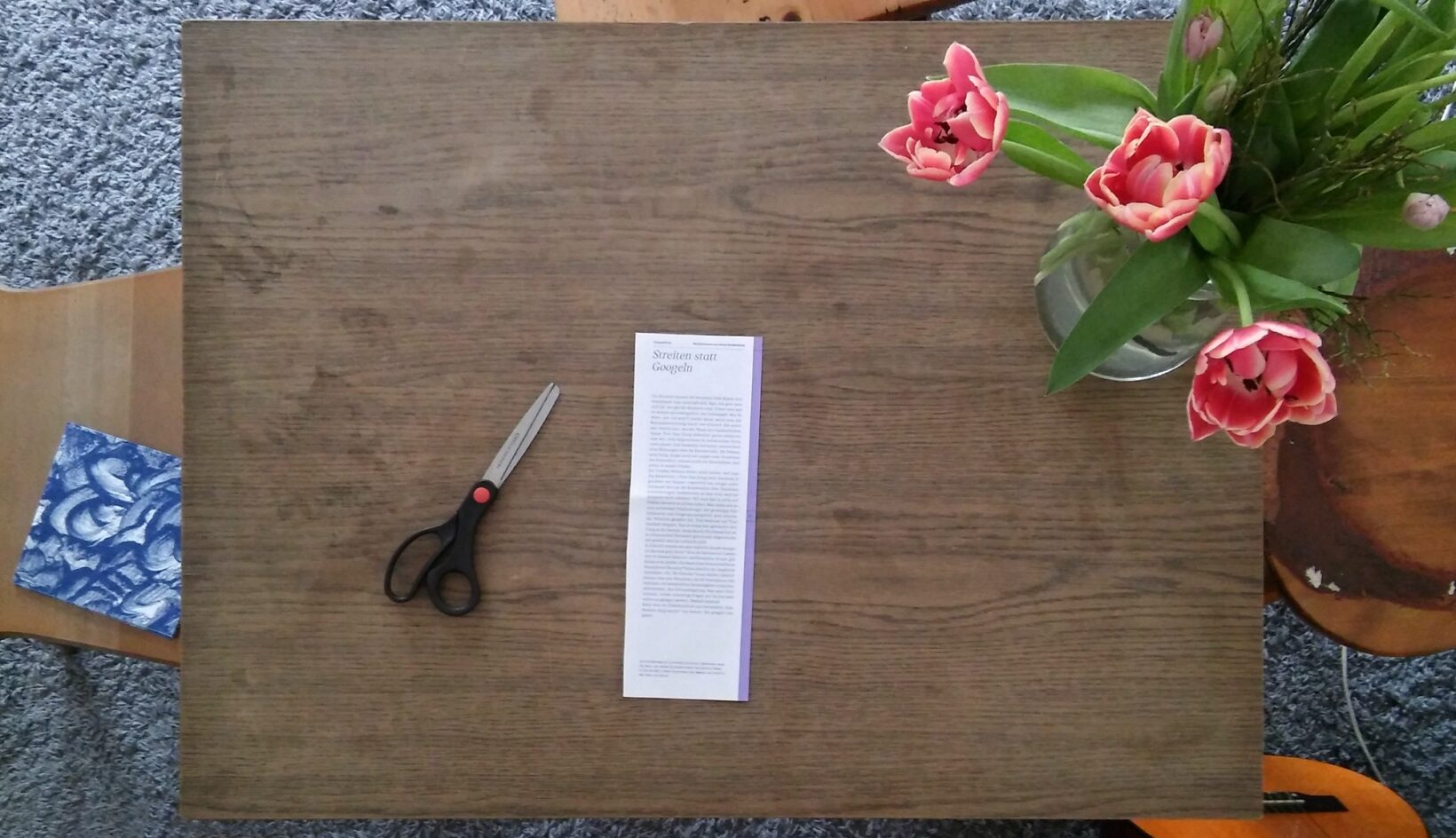
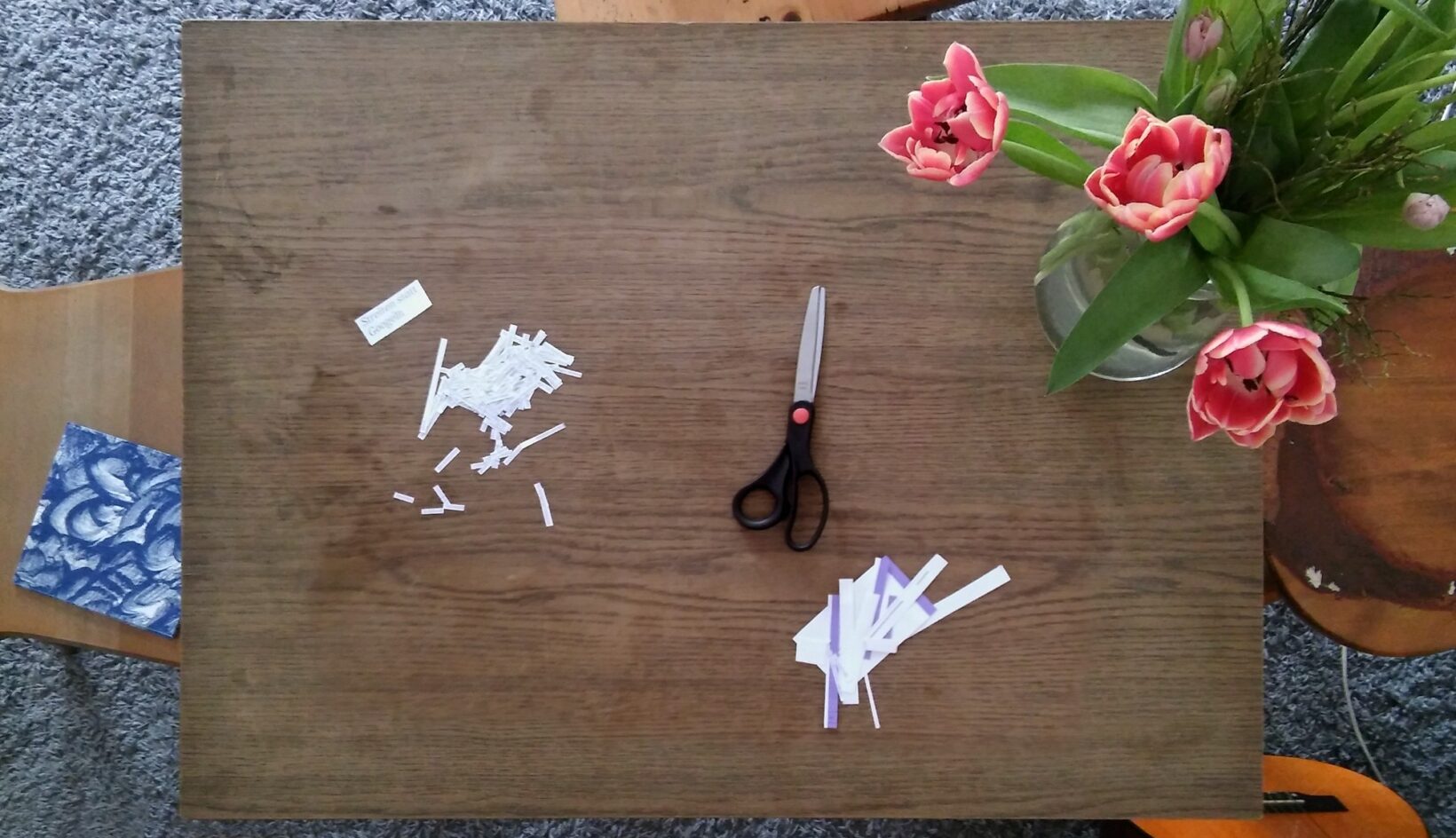
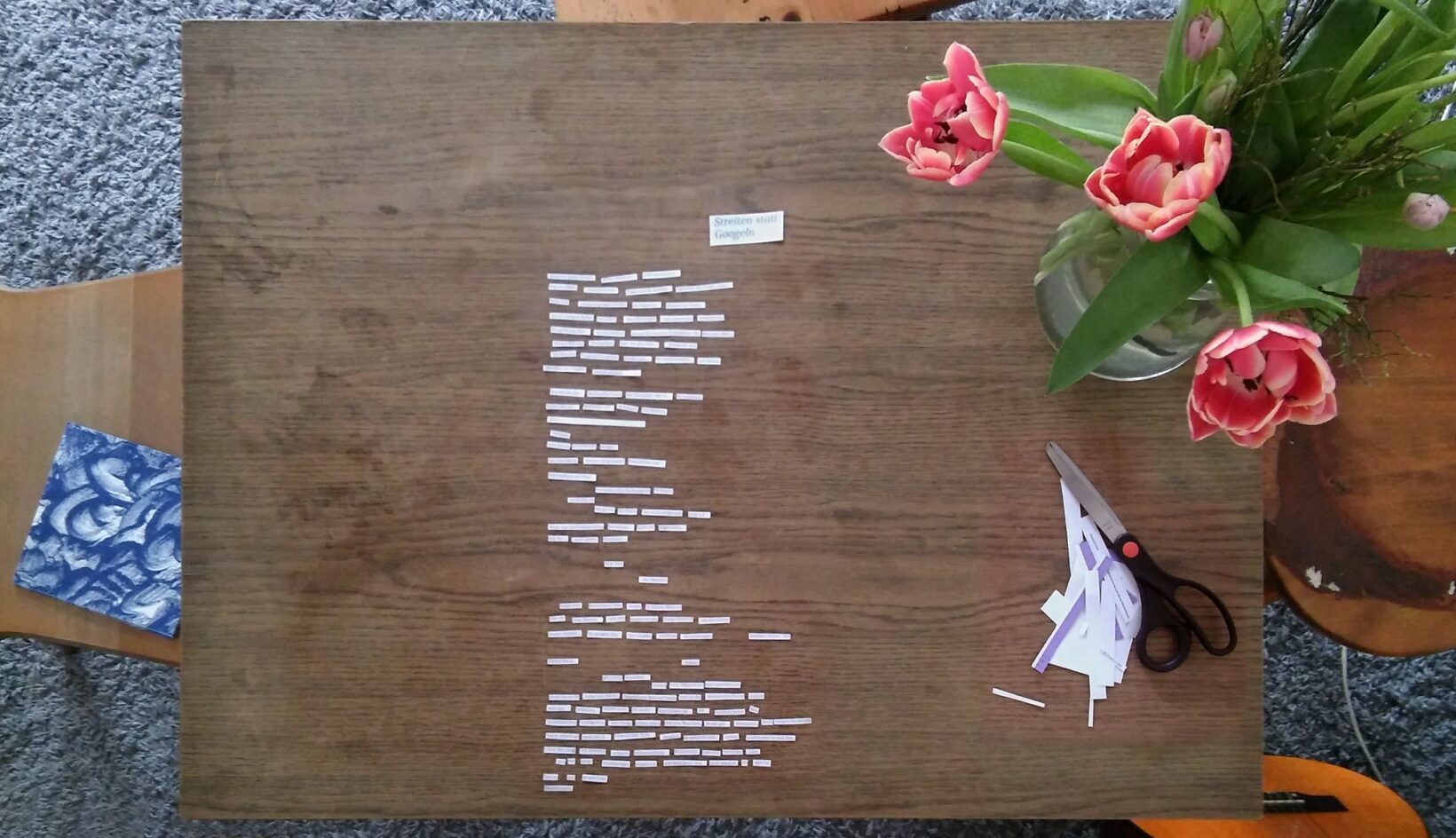
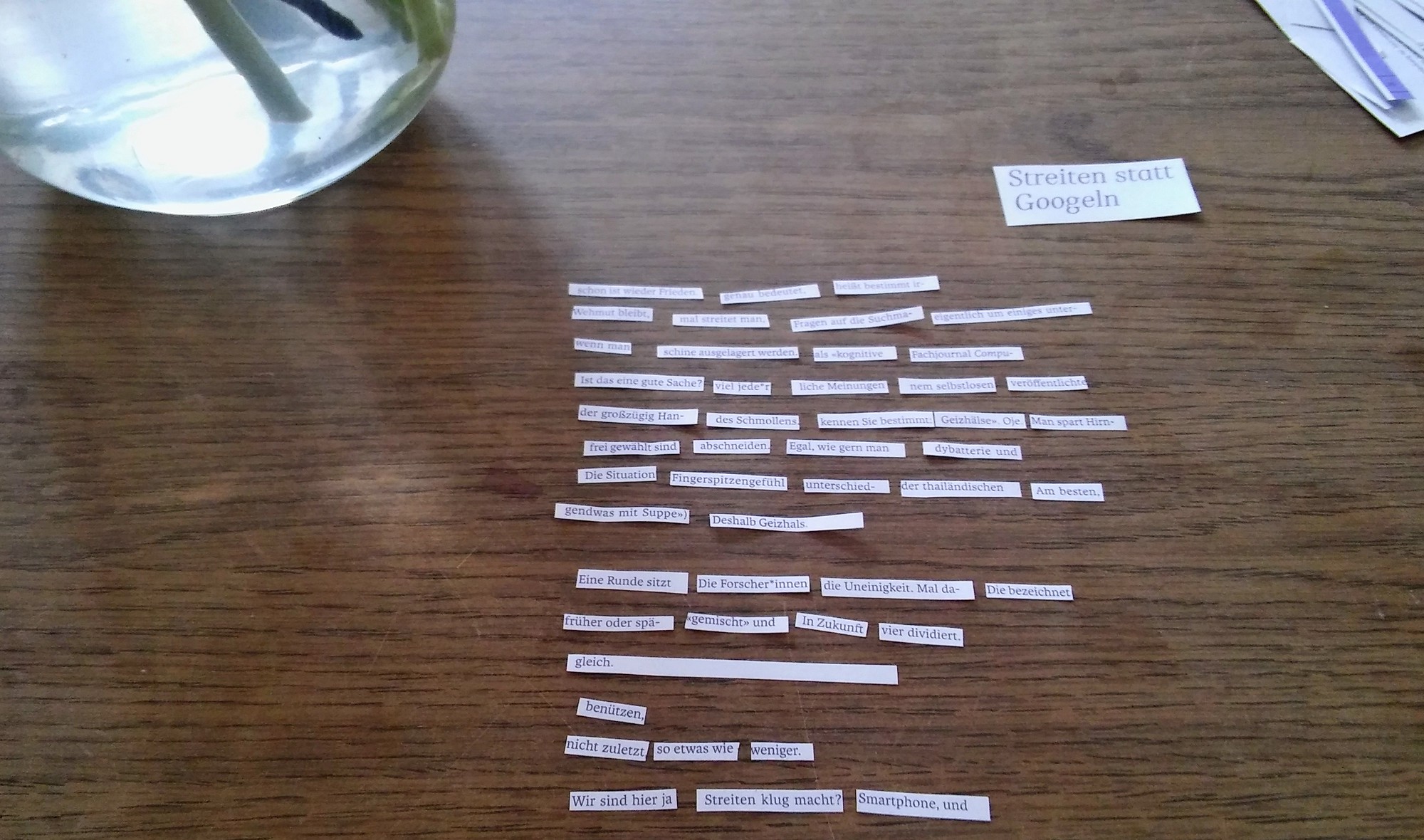
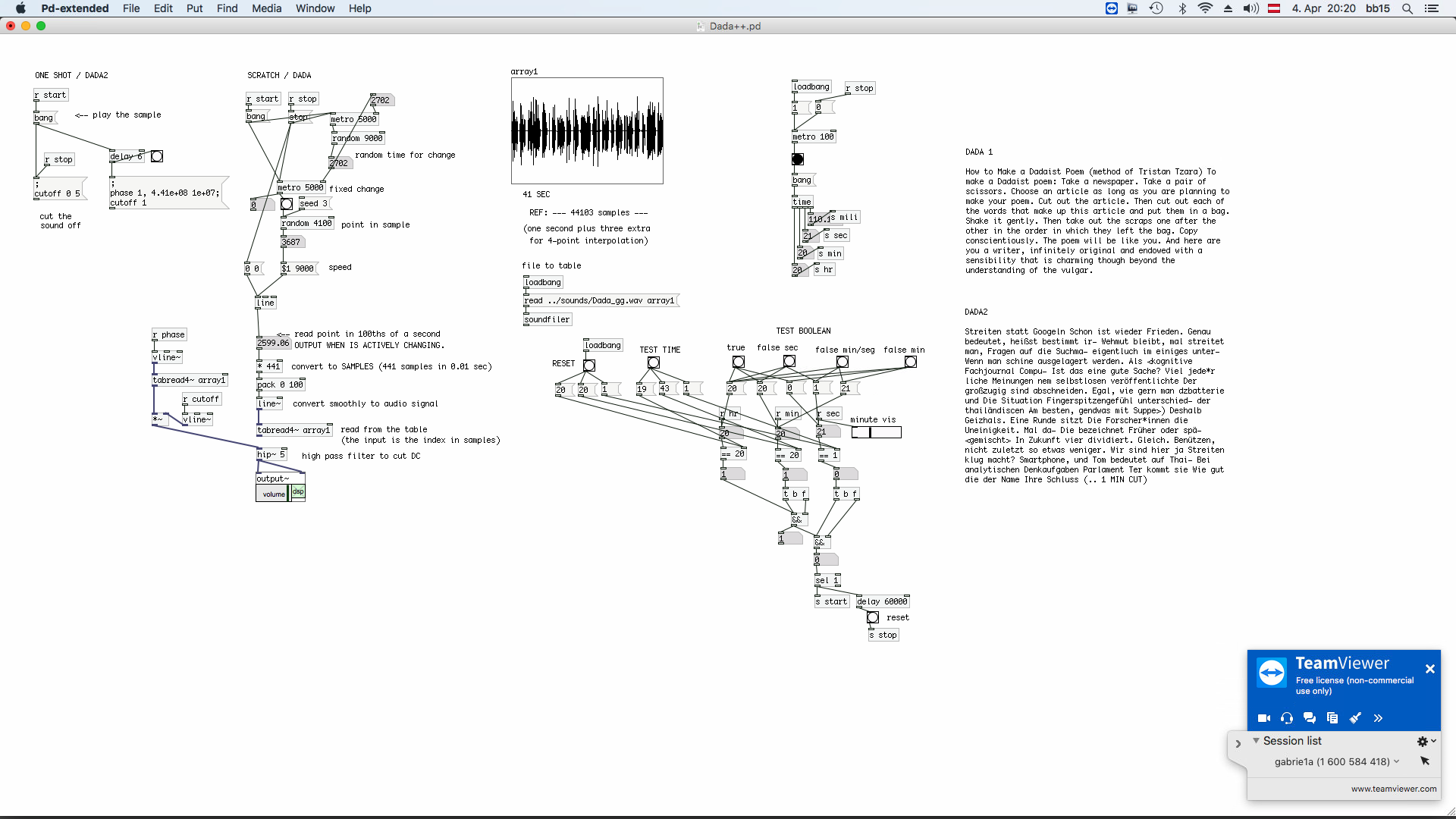
The result, in the recorded minute:
On day five, Carl Andre’s typed-page work ddddddddddddddddfffffffffffffffffffffffff, from 1958, was read out into the space.
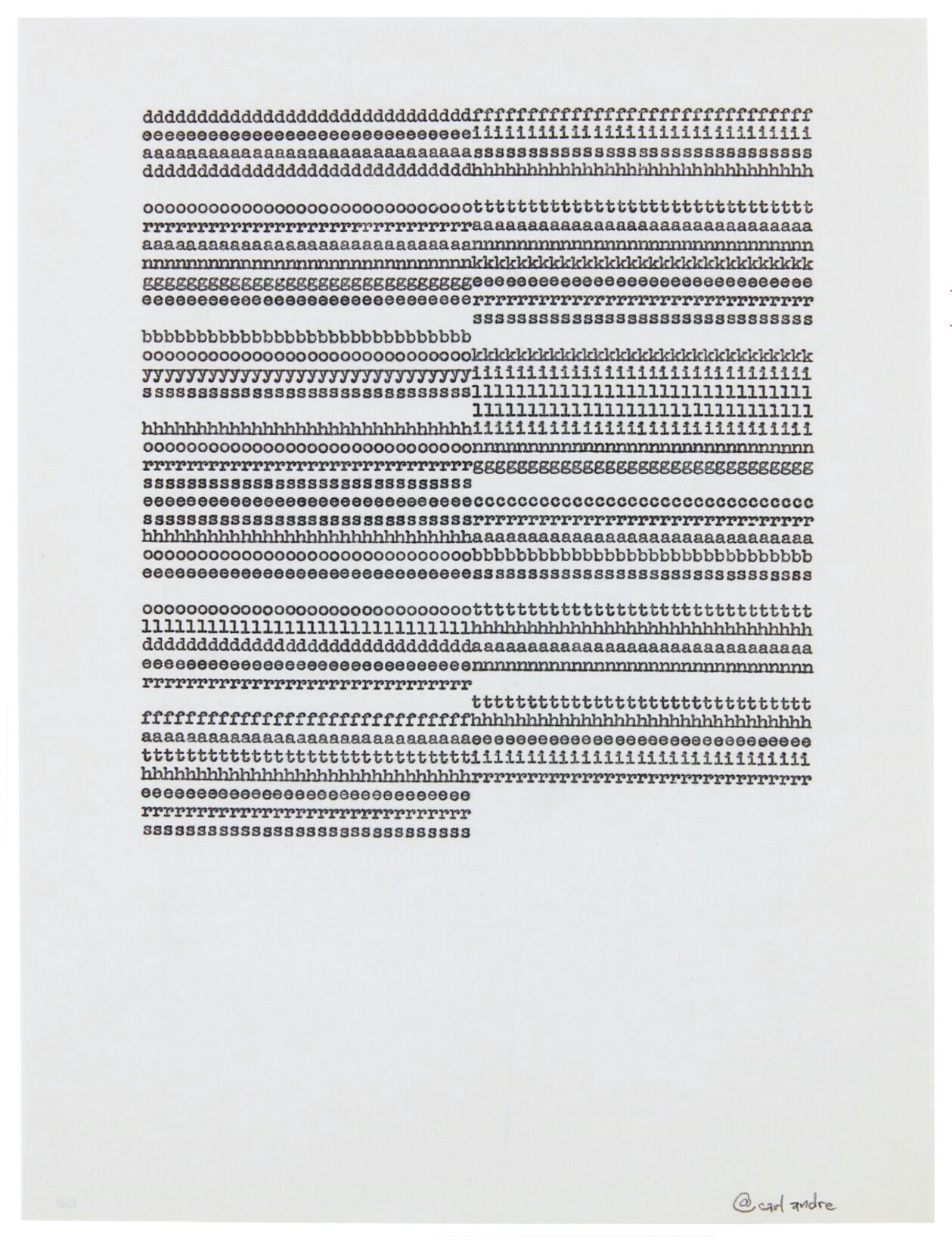
The recorded outcome was stark and rigorous:
The last day of the process returned to the same Carl Andre work, but unlocked the key — the typewritten lines of the work form an acrostic.
dead / fish / orange / tankers / boys / killing / horseshoe / crabs / older / than / their / fathers
And that was how this week-long, lockdown-inspired intervention unfolded. We’re very grateful to Gabriela for organising and overseeing this entire process.
From today, the week-long Remote Voices intervention will begin to fade into the quarantine-imposed quietness of the space. However, there are plans for possible future week-long interventions — depending, just like everything else, on how long the current pandemic and the associated restrictions will last. If you’d like to be kept up-to-date on these and other plans, make sure to check on Mastodon and Instagram to get the latest.
Below is a grid of the spectrograms created throughout the time of Remote Voices.
For more on Gabriela Gordillo’s work and thoughts, take a look at her website here.
And finally, for more about Minute/Year generally, take a look at the page about the work.
